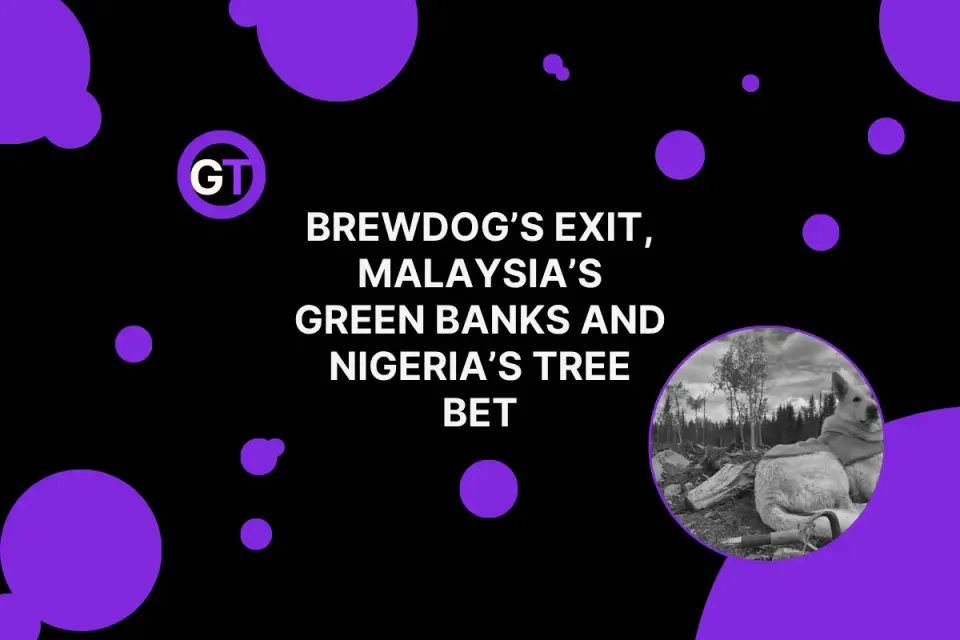Reforesting the Amazon: America's DFC Steps In
DFC to invest in Mombak's Amazon reforestation, planting trees, restoring ecosystems, and leveraging carbon credits for climate action.

$37M Gift from the Development Finance Corporation (DFC)
The U.S. International Development Finance Corporation (DFC) is investing $37 million into Mombak’s reforestation projects in Brazil, as reported by the Brazilian-American Chamber of Commerce.
This funding aims to restore degraded Amazonian land with native tree species, create jobs, and tackle environmental challenges. The announcement arrives in the aftermath of US President Joe Biden's historic visit to the Amazon.
For those who are curious, or pay taxes, or both, all investments made by the DFC are available on their website - they even have a nifty project map.
Mombak’s Mission to Turn Pastures Green
Since 2021, Mombak claims to have planted over 3 million trees while raising $150 million for restoration efforts. By partnering with cattle ranchers, as well as - checks notes - umm, oh wow, Microsoft, Bain Capital, and the World Bank, the company transforms degraded pastures into forests and generates carbon credits.
How Does Mombak Stack Up?
While Mombak’s 3 million trees planted is a significant claim, Brazil’s reforestation landscape apparently includes several even larger initiatives:
- Suzano reports over 127.78 million trees planted.
- The Reforest Program claims 115.58 million trees.
- The Pact for the Restoration of the Atlantic Forest boasts 444.49 million trees.
Yet, it’s impossible to verify these numbers or to assess how Mombak compares. Data on reforestation in Brazil is decentralized, reliant on voluntary submissions, and often incomplete. Mombak, like many other organizations, has not integrated its data into public platforms, reflecting a broader lack of transparency across the sector.
Challenges in Tracking Reforestation in Brazil
The Brazilian Restoration and Reforestation Observatory provides a window into restoration efforts but faces key challenges - a couple of which we touched on above, but to wit:
- Decentralized Data: Restoration records are not standardized or coordinated nationally.
- Voluntary Submissions: Self-reported data often leaves gaps.
- Private Sector Hesitation: Many landowners don’t share data, and compliance with legal agreements is weak.
- Ephemeral Forests: Some restored areas are later cleared to avoid legal protections under the Atlantic Forest Law.
While the observatory is a step forward, systemic governance and data-sharing improvements are needed to track tree-planting progress effectively.
Restoration Goals: Lofty but Doable?
As we've covered before, Brazil aims to restore 12 million hectares of degraded land by 2030. Investments such as the DFC-Mombak partnership are crucial to achieving this.
Though at the risk of sounding like a broken record, we'd just like to opine - it also requires more reliable reporting and collaboration between the public and private sectors. Platforms like the observatory could play a key role if better supported and more widely adopted.
The Saudi Arabia of Carbon Credits
Reforestation projects like Mombak’s highlight how economic and environmental goals can intersect. However, the success of these efforts depends on their ability to balance carbon capture, biodiversity, and sustainable livelihoods.
Mombak’s co-founder, Peter Fernandez, envisions Brazil as the “Saudi Arabia of carbon credits.” And of course, as he told The Economist, he wants Mombak to be the Saudi Aramco of that.
While the country has potential to lead in carbon removal, addressing the risks of over-reliance on credits—such as enabling emitters to avoid reducing their emissions—will be key to ensuring credibility.
The Bigger Picture for Nature-Based Solutions
Impressive claims—such as 444.49 million trees planted under the Pact for the Restoration of the Atlantic Forest—are only part of the story. True success requires measurable, lasting ecological and social benefits. Transparent, verifiable data will be crucial to understanding and maximizing the impact of Brazil’s reforestation efforts.
Conclusion
Brazil’s reforestation goals are ambitious, but systemic improvements in governance and data-sharing are critical. While initiatives like Mombak’s demonstrate progress, achieving long-term success will depend on collaboration, transparency, and accountability across all stakeholders.
Sources Cited
- U.S. International Development Finance Corporation. Active Projects. Retrieved on December 2, 2024.
- Brazilian-American Chamber of Commerce. DFC Approves $37 Million for Mombak’s Reforestation Projects in the Amazon. November 27, 2024. Retrieved on December 2, 2024.
- Observatório da Restauração. Dashboard. Retrieved on December 2, 2024.
- Do Rio, Mãe; Maracaçumé. Can the Voluntary Carbon Market Save the Amazon. The Economist. September 19, 2024. Retrieved on December 2, 2024.
- Mior, Stewart. Brazil’s $9 Billion Reforestation Plan. Ground Truth. November 10, 2024. Retrieved on December 2, 2024.
- Seibt, Taís, and Menegassi, Duda. Brazil’s Atlantic Forest Gets a Chance at a Fresh Start Through Restoration. Mongabay. March 7, 2022. Retrieved on December 2, 2024.
- Matsumoto, Marcelo; Anderson, Will; Reytar, Katie; Barbosa, Leonardo. Brazil’s Forests Are Being Restored. Now We Can See Where. World Resources Institute. March 10, 2021. Retrieved on December 2, 2024.
- Mombak. Mombak News. Retrieved on December 2, 2024.
- Ali, Benjamin. Mombak Hits $100M Final Close on Amazon Reforestation Fund (Exclusive). AgriInvestor. September 18, 2023. Retrieved on December 2, 2024.
- World Bank. Investors Support Amazon Reforestation Through Record-Breaking $225 Million World Bank Outcome Bond. August 14, 2024. Retrieved on December 2, 2024.
Edited by Chris Harris

This work is licensed under a
Creative Commons Attribution 4.0 International License.




